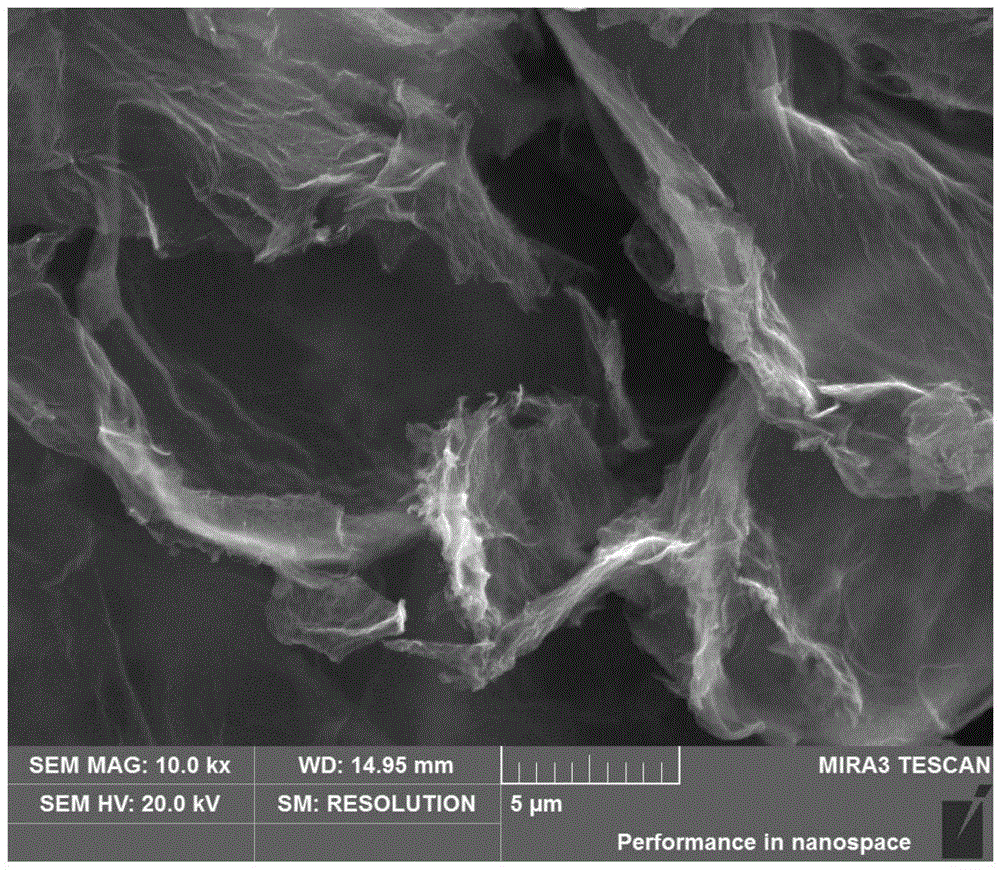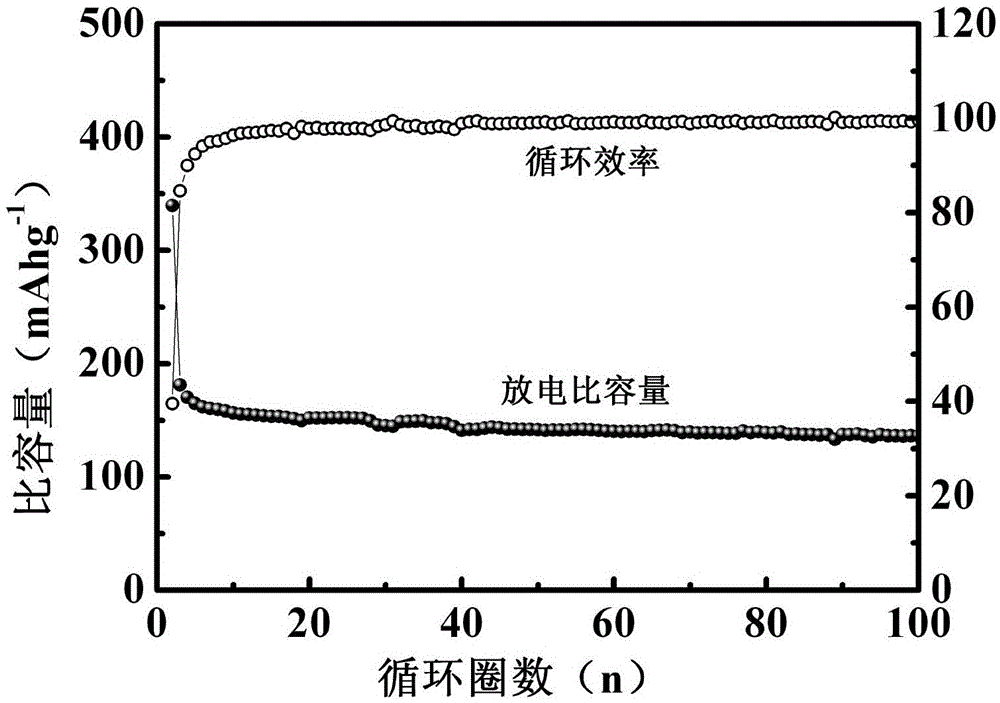Preparation method of molybdenum carbide/nitrogen-sulfur codoped spongy graphene cathode composite for sodium-ion battery
A nitrogen-sulfur co-doped, sodium-ion battery technology, applied in battery electrodes, secondary batteries, electrochemical generators, etc., can solve the problems of fast capacity decay and poor rate performance, and achieve low cost, guaranteed specific capacity, Environmentally friendly effect
- Summary
- Abstract
- Description
- Claims
- Application Information
AI Technical Summary
Problems solved by technology
Method used
Image
Examples
Embodiment 1
[0041]First take by weighing 3g of flaky graphite with a purity of 99.5%, join in the mixed solution containing 350mL mass fraction of concentrated sulfuric acid of 98% and 50mL of mass fraction of phosphoric acid of 85%, add 18g of potassium permanganate in batches for oxidation, and The mixed solution was kept at 0°C under ice bath and stirred for 2h, then heated to 45°C in a water bath and reacted under magnetic stirring for 12h to obtain a mixed solution; then, 400mL of deionized water was slowly added to the mixture under ice bath After the reaction is stable, slowly add 20mL of hydrogen peroxide to remove unreacted potassium permanganate, and then the color of the mixed solution turns bright yellow; finally, the resulting mixed solution is repeatedly washed with a large amount of deionized water, centrifuged and put into a dialysis bag for dialysis A pure graphene oxide solution can be obtained in 5-7 days. The concentration of graphene oxide in the prepared graphene oxi...
Embodiment 2
[0051] Measure 10 mL of the above graphene oxide solution (the graphene oxide content is 10×5 mg / mL=50 mg) with a measuring cylinder, pour it into a 150 mL beaker and stir it magnetically at room temperature. Then take thiourea 0.3g according to the nitrogen source sulfur source and graphene oxide mass ratio 6:1, add in the graphene oxide solution being stirred, continue stirring for 1h after the thiourea and graphene oxide solution are fully mixed to obtain the Nitrogen-sulfur graphene oxide solution.
[0052] According to the molybdenum source and carbon source mass ratio of 4:1, respectively weigh 1.0 g of ammonium paramolybdate and 0.25 g of glucose, and add them to 40 mL of deionized water successively, and slowly add the mixed solution to the above-mentioned nitrogen-containing solution under magnetic stirring conditions. In the graphene oxysulfide solution, after fully stirring and dispersing for 1 h, the mixed solution was adjusted to a pH of 10 with tris(hydroxymethyl...
Embodiment 3
[0056] Measure 10 mL of the above graphene oxide solution (the graphene oxide content is 10×5 mg / mL=50 mg) with a measuring cylinder, pour it into a 150 mL beaker and stir it magnetically at room temperature. Then take thiourea 0.4g according to the nitrogen source sulfur source and graphene oxide mass ratio 8:1, add in the graphene oxide solution being stirred, continue to stir for 1h after the thiourea and graphene oxide solution are fully mixed to obtain the Nitrogen-sulfur graphene oxide solution.
[0057] According to the molybdenum source and carbon source mass ratio of 2:1, respectively weigh 1.0 g of ammonium paramolybdate and 0.5 g of glucose, and add them to 40 mL of deionized water successively, and slowly add the mixed solution to the above-mentioned nitrogen-containing solution under magnetic stirring conditions. In the graphene oxysulfide solution, after fully stirring and dispersing for 1 h, the mixed solution was adjusted to a pH of 10 with tris(hydroxymethyl)a...
PUM
| Property | Measurement | Unit |
|---|---|---|
| Particle size | aaaaa | aaaaa |
Abstract
Description
Claims
Application Information
 Login to View More
Login to View More - R&D
- Intellectual Property
- Life Sciences
- Materials
- Tech Scout
- Unparalleled Data Quality
- Higher Quality Content
- 60% Fewer Hallucinations
Browse by: Latest US Patents, China's latest patents, Technical Efficacy Thesaurus, Application Domain, Technology Topic, Popular Technical Reports.
© 2025 PatSnap. All rights reserved.Legal|Privacy policy|Modern Slavery Act Transparency Statement|Sitemap|About US| Contact US: help@patsnap.com



